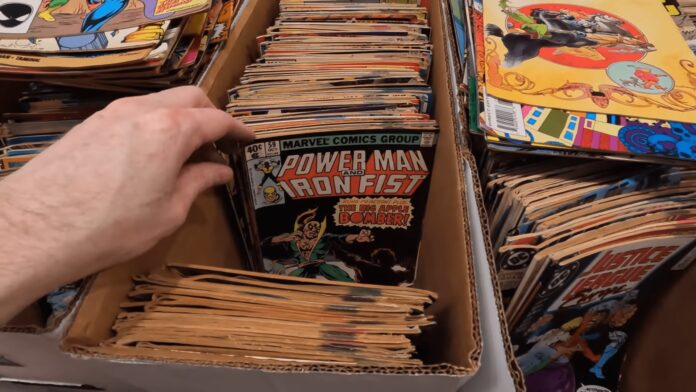In the world of comics, size is everything. Not only do you have to worry about the size of your issues, but you also have to worry about the size of your boxes. For some publishers, it can be difficult to fit more than a few comics into a single container. And when you’re dealing with long-running series or collections, that can be a real challenge.
In this article, we will explore exactly how many of them fit in a long box and how you can maximize the space you have. By understanding the dimensions, you can make sure your products are presented in the best possible way.
How Many Books Does a Long Box Hold?

A long box is a perfect solution for storing. It holds a lot of comics, and it’s easy to move around. If you have a lot of them, or if you just want to organize them better, a bigger one is a solution for you. There are a lot of factors to consider when determining how many of them fit in it. The size, the thickness of the cardboard, and the dimensions of the container all play a role.
There are different sizes of long containers, but the most common size is 36 inches wide by 24 inches deep by 6 inches high. That means that it can hold 300 strips. If you have more than 300, you can stack them on top of each other so that they fit in the box better.
When it comes to a box with a length of 18 inches and a width of 12 inches, it will hold around 192. However, this number can vary depending on the size and shape of them, as well as the quality of the packaging.
How much does a box full of comics weigh?

A long box full of these types of books can weigh anywhere from 10-30 pounds depending on the size and number of them. A standard comic container contains 24 issues of books, so a long one would contain around 300.
What is it worth?
A long box can be a valuable collector’s item. Some major publishers, such as Marvel and DC, release multiple books every month. Collecting all of these issues can be costly and time-consuming. However, a box of comics may only be worth a fraction of its original value.
The value depends on the condition, rarity, popularity and publisher of the book. A box of new, unused comics in perfect condition can sell for up to $200+, while older, used ones can sell for around $10-15 each. It’s important to note that the value of the book series will also depend on whether or not the series is currently being published, as well as any special features or cover art included.
For example, a box of Marvel Strips from the late 1960s or early 1970s can be worth a lot more than one of the newer ones.

Long box vs Short box for storing
When storing them, it can be helpful to know the difference between a long box and a short box. A long box is typically taller than it is wide, which makes it easier to stack multiple volumes on top of each other. A short box, on the other hand, is wider than it is tall, which makes it more efficient for storing individual comics.
Ultimately, the size of the storage container you choose depends on your personal preferences and how much space you have available.
For example, if you have a lot of them and want them to be easily accessible, then a long box might be the best option for you. If you only have a limited amount of space and want to save money by using less storage space, then a short box might be better suited for you.
How often should you replace bags and boards when storing these types of books?

As a general rule, book collectors should replace bags and boards every 6-12 months. This is based on the average life of a comic book bag or board – which is typically around 3-6 months.
If they are stored in an environment with low humidity levels, they may last even longer. These book-type collectors who frequently check their collections for signs of wear and tear may want to replace bags and boards more often, depending on how frequently they handle the strips.
If you store them in a cardboard or plastic protector sleeve, it’s probably not necessary to replace the bag and board every month. However, if your sleeves get moist or if they start to tear, it’s time to replace them. You can usually find new protectors at comic book stores, or online.
5 Tips to Properly Store Your Comic Books
It’s important to properly store your comic books in a cool, dry place to ensure their longevity. Here are some tips:
- Keep your comic books in a cool, dark place where they will not be damaged by sunlight or heat.
- Do not stack your strips high in a closet or cabinet; this can cause damage to the covers and pages.
- Store them in a plastic bag to protect them from dust and other airborne particles.
- Do not leave them out in the open where they can be damaged by rain, snow, or other elements.
- If you do decide to store your strips on shelves, try to position them so that they are facing away from direct sunlight or heat sources.
Conclusion
When it comes to comics, many people have a love/hate relationship with them. Some people can’t get enough of the medium and others find it tedious and repetitive.
Regardless of whether you’re a big fan or not, you probably know that they fit in long boxes pretty easily. So if you’re ever looking for an easy way to store them, try using a long box instead of those flimsy shelves.
Don’t miss out on our list of the best lesbian and gay comic strips.
